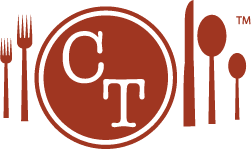 The afternoon is waning, and I happen to mention to my administrative assistant that I’ve signed up for an evening class on blue cheese.
The afternoon is waning, and I happen to mention to my administrative assistant that I’ve signed up for an evening class on blue cheese.She raises one eyebrow slightly. “Oh,” she says, followed by a moment of discomforting silence. “Blue cheese certainly has an interesting flavor.”
Few people are ambiguous about blue cheese. They either love it or hate it. I fall into the love category. For me, it is an attraction that is deep, obsessive and mildly deranged.
Blue cheese is like the whiskey of the dairy world. Wimps need not apply. You’ve got to have a strong constitution. The aroma resembles that of rich loam, freshly cultivated. The smell alone can grow hair on your chest. But don’t let my clearly obsessive compulsion for the Big Blue scare you from becoming an aficionado.

I am the first to arrive at the upper room at Murray’s Cheese in Greenwich Village. Murray’s is the destination for cheese-aholics in Manhattan. The education staff is pouring wine and setting out square white plates carefully arranged with wedges of cheese. I take a chair at a U-shaped table that will seat up to 25 people. There is a large glass window at the front of the classroom, and below, I can see well-dressed Greenwich Villagers perusing the glass display cases in search of their weeknight cheese tasting.
The class is aptly titled, “Got the Blues.” At my place setting there are six glasses partially filled with different varieties of sweet wines. They range from deep-red to amber to honey-colored. Before me are six triangles of off-white cheese speckled with veins of greenish-blue on a stark white dish. There is an intriguing, pungent aroma wafting off the plate.
Shortly, the classroom is packed, and I am relieved to know there are others like me in the naked city. The instructor is a young man named Chris Munsey, who works in the wholesale department of Murray’s. He has tousled hair, a cherubic expression and an encyclopedic knowledge on the basics of blue cheese.
We follow a plating chart, that maps out our wine selections and corresponding cheeses. Straight away, Chris warns us that our palates are in for a workout. Blue cheese and sweet wines are the stuff of intense flavors.
We start our tasting in the traditional way – the cheese at the 12 o’clock position on the plate is sampled first, and then you proceed clockwise around the perimeter of the plate.

Chris explains why he has selected sweet wines to contrast the dramatic, earthy flavors of the cheese – “Blue cheese tramples dry wines.”
An important word about that bluish green stuff on the cheese – it is mold, plain and simple. But it’s a good kind of mold, responsible for some of the most amazing salty, earthy, tangy and arresting flavors one can possibly experience. If you think you’ve been living on automatic pilot, have a bite of blue cheese. You’ll snap out of it.
“Blue cheese won’t hurt you. It will just make you stronger,” Chris advises.
He explains the process, which involves aging cheese laced with a mold called penicillium. After some time, the ripened cheese is injected with holes, allowing oxygen to interact with the penicillium and create that distinctive bluish-green shade usually seen in certain Van Gogh paintings. Blue cheese loves humidity and moisture and tends to thrive in caves. Nobody knows exactly how it was discovered, but as is usually the case in culinary one-upmanship Italy, France and Spain all claim credit for inventing blue cheese.
As we circle the plate, we travel the world. There is a mild blue cheese made from raw cow’s milk in France and a creamy gorgonzola. We are told that Stilton from England has a reputation for producing strange dreams. We taste a glorious “Bayley Hazen Blue” from Jasper Hill Farm in Vermont and we sample my top choice – Cabrales from Spain. Cabrales has a strong, gritty mineral flavor that practically brings tears to my eyes. The wines mingled artfully with the acerbic taste of the cheese. My head is reeling.
Chris says that the trick to pairing wine with blue cheese is that “both flavors are harmonious, not fighting each other.”
The class is concluded, and I set out for the train feeling slightly intoxicated and a bit heady, and it’s not because of the wine. I’ve had my Blue fix and I feel good. An ordinary evening has tasted extraordinary, and Murray’s has secured its reputation as a Mecca for colorful curds. With all that Stilton in my veins, I am sure I will dream of kings, sea monsters, despots and big blue oceans tonight.
©2008 T.W. Barritt All Rights Reserved
























